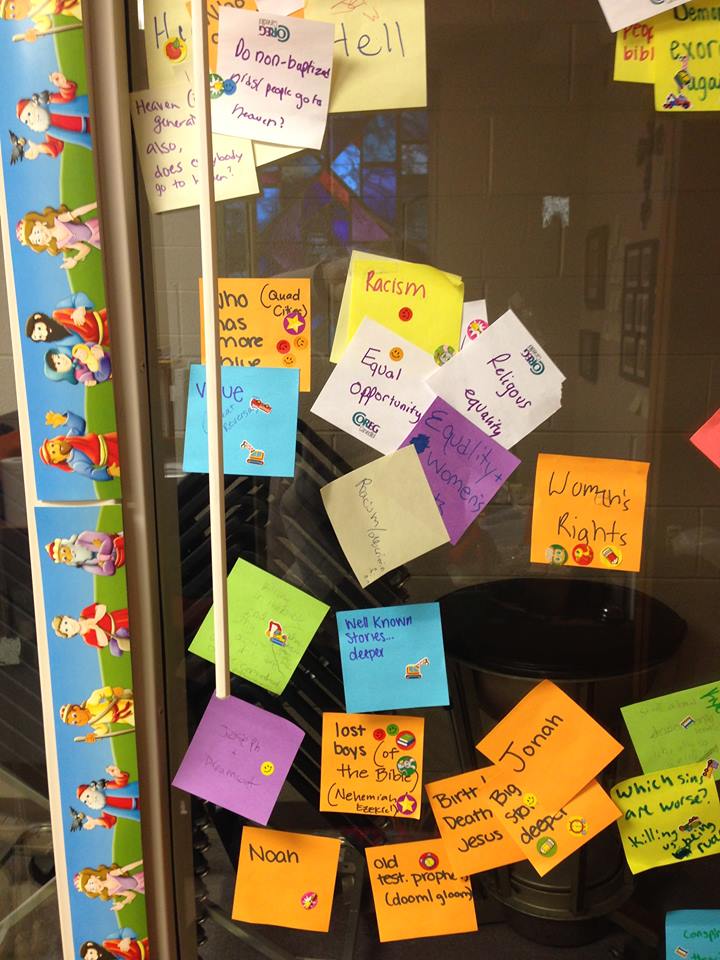Over the Christmas holiday, I’ve got an entire day blocked out in my schedule in order to figure out our ministry’s spring calendar. The dates of our major events (like retreats) were announced months ago, but things like trip meetings and events to honor our graduating seniors still need to be scheduled. As part of this calendaring process, I’ll also create the spring teaching calendar for both our Sunday morning and Wednesday evening gatherings.
To do so, I’ll refer back to my student leadership’s brainstorming board.

As part of our summer planning, I walk student leaders through an elaborate brainstorming process. During it, they brainstorm social and service events as well as the topics they’d like to discuss throughout the year. Occasionally, I’ll give them opportunities to add to this brainstorming board throughout the year.
Here’s how this brainstorming process works:
-
Distribute a stack of post-it notes to each student.
-
Instruct students to write down events they’d like your youth ministry to do throughout the year along with topics they’d like to discuss on the post-it notes, one idea per post-it. Remind them NOT to filter their ideas. In brainstorming, no idea is bad. Even the most off-the-wall idea can prompt other ideas.
-
As students finish brainstorming, sort their post-its into sections: Social events, service events, or topics. Stick repeated ideas on top of one another. Group similar ideas together.
-
Read each idea aloud. Invite the student who came up with it to explain it in 20 seconds or less. (Feel free to make additional notes on the post-it that will help you remember the idea later on). Give teens time to ask clarifying questions but NOT to criticize ideas. (Since criticism kills the creative process faster than anything else, immediately shut down any criticism you hear and remind teens of this rule.)
-
Once every idea has been explained, conduct visual voting, a silent means of voting that helps eliminate peer pressure and gives teens more of an opportunity to reflect their genuine interests and desires. To do this, hand each student a sheet of small stickers. (Give teens 1 sticker for every 8-10 ideas in a particular category). Instruct teens that this is a SILENT activity and that anyone who violates this rule will lose their right to vote. (Make sure you enforce this rule.) Allow teens to use all their votes on one idea if they feel really strongly about it.
Once done, keep your finished brainstorming wall in tact, somewhere you can refer to it often. (Mine’s in my office). Throughout the year, as you utilize various ideas, remove them from the wall. Arrange connected ideas into tentative teaching series.
When it’s time to plan your calendar, refer to and use the ideas from your brainstorming board. Remember that those ideas with the most stickers are the ones teens are most interested in doing.
Utilizing ideas from your brainstorming board will enable you to come up with a more creative calendar. Additionally, in doing so, your calendar will reflect not just the needs or interests you assume your teens have, but their actual ones.


Leave A Comment